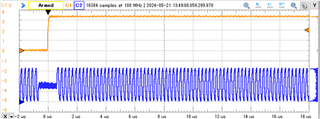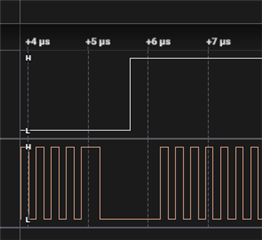Tool/software:
I am outputting the internal clock (set to 4MHz) and monitoring it with an oscilloscope, but
as shown in the figure below, the output waveform of the internal clock becomes strange when the GPIO output switches to High or Low. (The output voltage becomes low and the cycle is abnormal.)
The orange waveform is the GPIO output, and the blue waveform is the internal clock output.


Why does this happen?
Also, I am using the internal clock for timer operation, so will this have any effect?
Please check.



